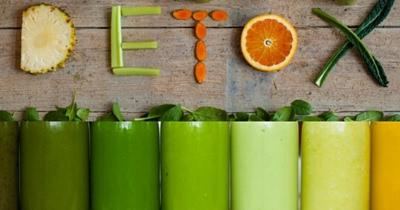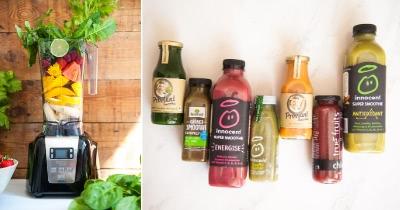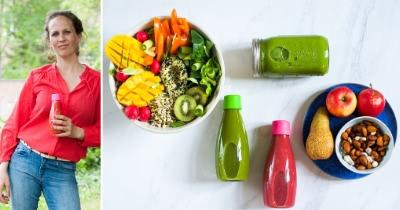How to clean a blender or slow juicer with baking soda

How wonderful that there are simple things that are fascinating. One of them is baking soda. Because with baking soda, discolored blender containers can easily be made to shine again. The same applies to our slow juicers, which are sparkling clean again after a baking soda bath. Particularly valuable about this type of cleaning is that soda or sodium carbonate (Na2CO3) is environmentally safe. And of course, you can use baking soda in general in the household as an extremely effective cleaning agent.
Overview of Cleaning Instructions
How to clean a blender container with baking soda
If you make Green Smoothies daily, you know how quickly the blender container becomes slightly brownish from the plant fiber. You can remove these color deposits on the plastic overnight with a soda-water solution:
- First, fill the blender container halfway with hot water.
- Then add baking soda in a ratio of one tablespoon of soda per 0.5 liters of water. i. e. if your blender container has a total volume of 2 liters, use 4 tablespoons of baking soda.
- Mix the soda-water mixture for about 30 seconds.
- Place the blender container in the sink and fill it with hot water up to the brim. Important: Please fill the container really full with hot water, as otherwise an "waterline" can form overnight that you can't remove from plastic!
- Simply leave the blender container with the soda-water mixture overnight.
- The next day: Since baking soda can irritate the skin, please wear gloves before rinsing the blender container. Now pour out the soda solution into the sink.
- Finally, clean the inner walls, the bottom of the jar including the blades, with some water and a long-handled natural brush like our natural cleaning brush for blender containers. If not all discolorations are removed, repeat the entire process until the blender container is completely clean.

How to clean slow juicers with baking soda
When juicing green leaves, root vegetables like beetroot or carrots, turmeric or celery, there can be color deposits on the juicer parts. The auger and the screen are particularly affected. These discolorations can also be easily removed with a homemade soda cleaner made from baking soda and hot water:

- You need a sufficiently large container to soak all juicer parts in a soda-water solution. e. G. a large stainless steel cooking pot or soak individual juicer parts one by one in a bowl. But make sure that the container for soaking is large enough to completely cover all parts of the juicer with the soda-water solution. If this is not the case, a soda residue can form on plastic parts that you cannot remove. With stainless steel, you can remove the soda residue with a little vinegar essence!
- For every half liter of water, you need 1 tablespoon of baking soda. i. e. if you use a container for soaking that holds 3 liters of water, you need 6 tablespoons of baking soda.
- Now fill the soaking container with hot water and add the corresponding amount of baking soda. Briefly stir the solution!
- Then place the juicer parts in the soaking container. Please add water if the juicer parts are not completely covered with the soda-water solution - see point 1 of the instructions.
- Let the container with the soaked juicer parts stand overnight.
- The next day: Please wear gloves to rinse and clean the juicer parts, as baking soda can irritate the skin. Now pour the soda-water solution into the sink.
- Now, it's best to clean all juicer parts with a long-handled cleaning brush like e. G. our natural cleaning brush at the places where there are still deposits.
- Then rinse everything well under lukewarm water. If there are still discolorations, simply repeat the cleaning process.

Do you know baking soda as an effective cleaning agent in the household? If so, what do you use soda for?
Looking forward to your feedback here.














































